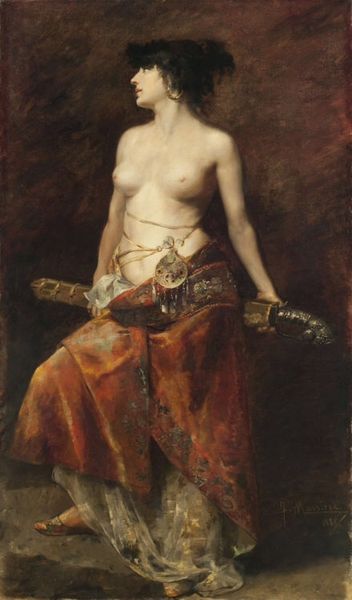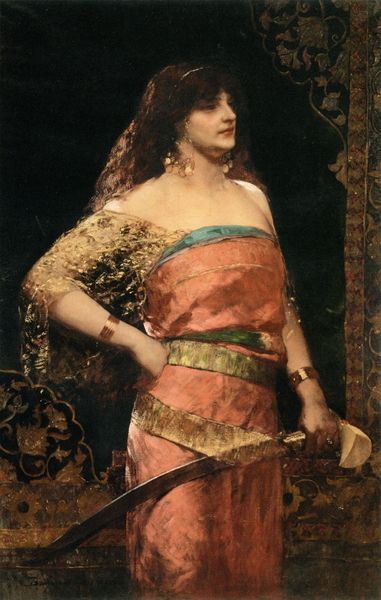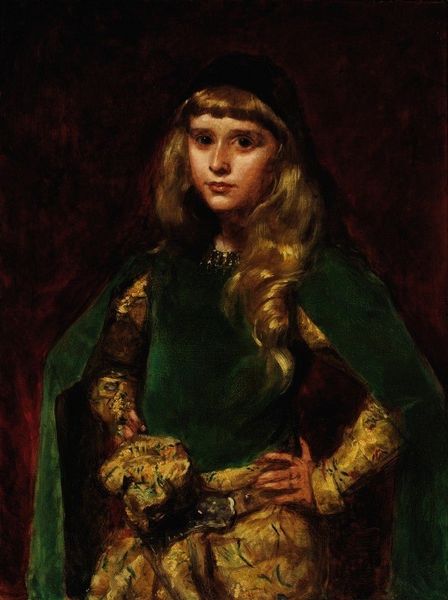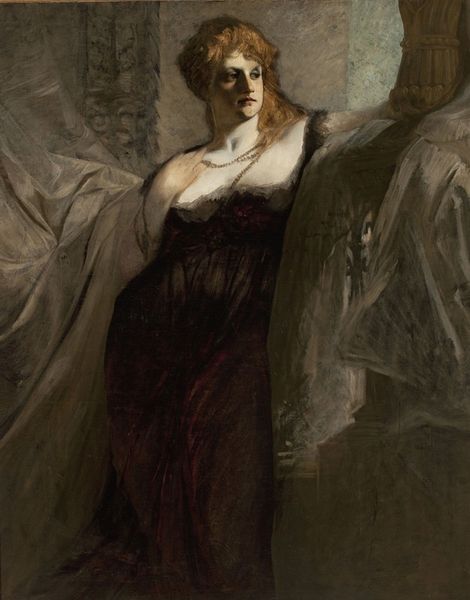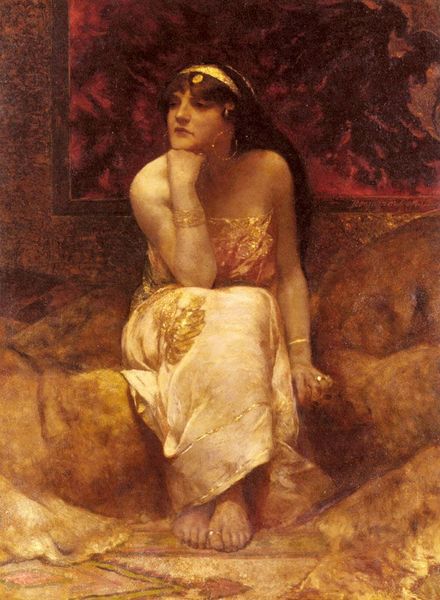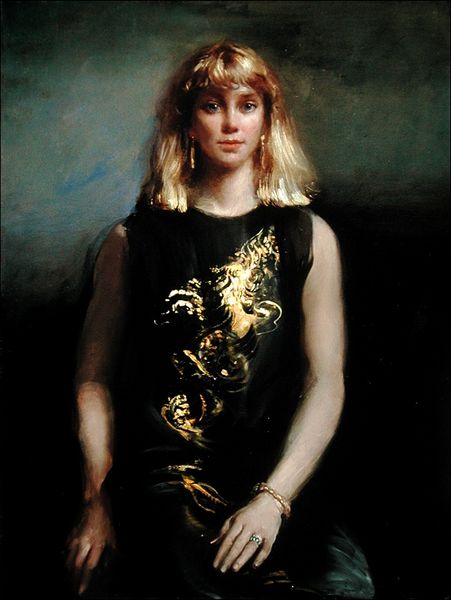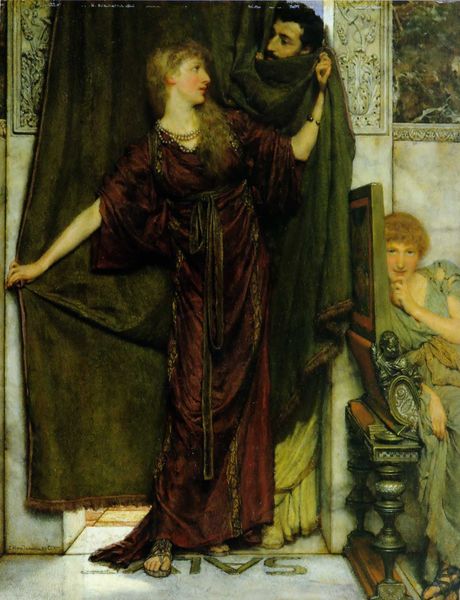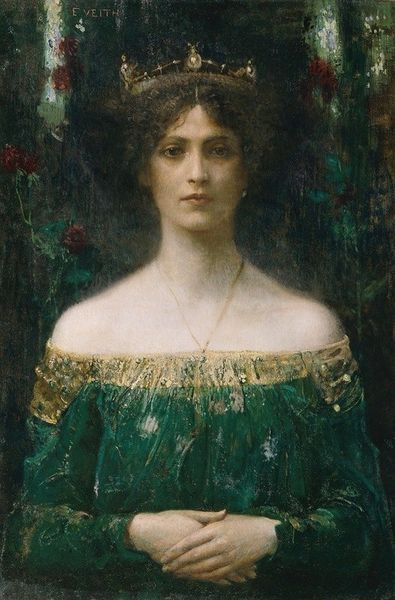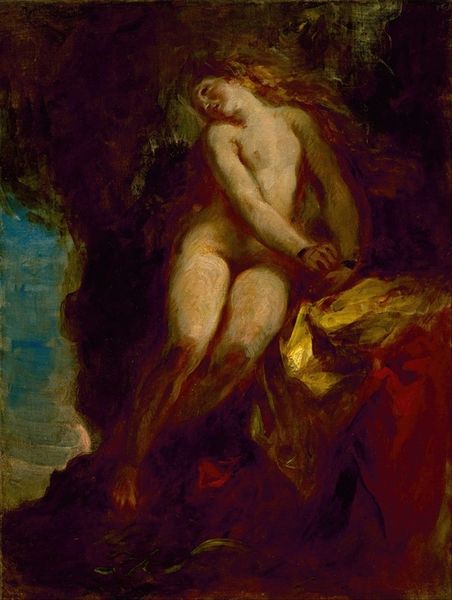
Copyright: Public Domain: Artvee
Curator: Benjamin-Constant's "Judith," completed around 1886, presents us with an imposing figure, rendered in oil on canvas. Editor: My initial reaction is of boldness, almost defiance. There is a striking juxtaposition of rich fabrics and that very large sword. Curator: Absolutely. Constant, working within an Orientalist framework, clearly wants to create an assertive vision. Think of the Book of Judith; in art, she's often portrayed as a temptress or as frail and victimized after the act. Here, she meets your gaze head-on, weapon in hand. How might contemporary feminist readings interpret this? Editor: This feels like a potent re-framing of the narrative. We are asked to contemplate Judith not just as a figure of biblical lore but as an emblem of female agency in a patriarchal world. Curator: Her gaze carries through the portrait and her posture also supports it. Consider, too, how the use of vibrant colors serves to further highlight her power—the sumptuous textiles, contrasted against the dark, somewhat undefined background. What does the painter emphasize, through form and color, in representing her? Editor: Constant utilizes strong diagonals in the drape of her garments and the positioning of the sword, leading the eye directly to her face and expression, the key semiotic of the whole artwork. It projects purpose and conviction. Even the detailing on her jewelry adds to this air of resolute self-assurance. Curator: Judith also challenges typical gender roles and expectations of that era. I am not certain if the viewers during that time had the tools or framework for what Judith truly symbolizes about strength, violence, and resistance to tyranny. Today we can read this piece from multiple positions by questioning who gets to wield power, and who benefits from Judith's actions? Editor: Through the interplay of line, color, and composition, Constant's rendering offers us more than a mere depiction; it sparks dialogues around visibility, subversion, and strength in the biblical tale. Curator: Yes, it really provides a powerful commentary on power dynamics and representation, and the possibilities of reading narratives through a contemporary lens. Editor: A valuable insight into the artist's choices in constructing such a commanding figure within the painting's visual vocabulary.
Comments
No comments
Be the first to comment and join the conversation on the ultimate creative platform.
